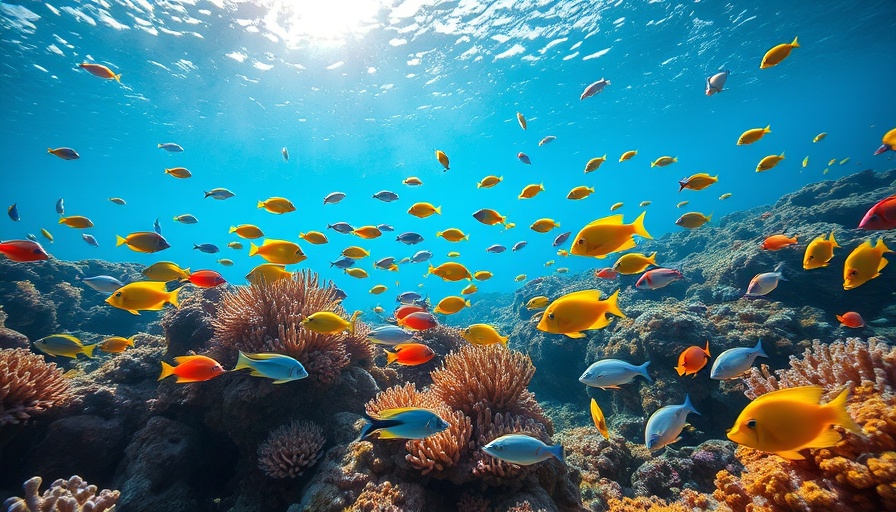
Dire News for Australia’s Great Barrier Reef
Australia's Great Barrier Reef, a UNESCO World Heritage site and one of the most diverse natural ecosystems on the planet, is facing an unprecedented crisis. Recent reports highlight a record decline in coral health following a series of mass bleaching events. The coral reefs have seen a staggering 24% drop in their coverage over the past few years, raising alarms among scientists and environmentalists alike.
The Bleaching: Understanding the Cause
Mass bleaching occurs when corals become stressed, usually due to elevated water temperatures. As temperatures rise, corals expel the algae (zooxanthellae) that provide them with nutrients and their vibrant colors. This stark white appearance signals a danger sign—not just for the corals but for the myriad species that rely on these environments for habitat and food. Scientists warn that if ocean temperatures continue to rise due to climate change, more corals may bleach and subsequently die, resulting in further losses to the reef ecosystem.
Ripple Effects of Coral Decline
The Great Barrier Reef is not only a critical habitat for marine life but also plays a significant role in Australia’s economy, contributing billions through tourism and fishing industries. As the coral health declines, the economic ramifications are expected to be severe. The tourism sector, which is Heavy reliance on the vibrant marine life and beautiful reefs, could see a drop in visitors, directly affecting local businesses and employment opportunities.
Hope and Restoration Efforts
Despite the alarming statistics, researchers and conservationists are not without a plan. Several initiatives aim to rehabilitate the reef, focusing on coral gardening efforts and genetic research to develop heat-resistant coral species. The awareness surrounding the reef's plight has resulted in a global push for more actionable climate policies and sustainable practices aimed at protecting these fragile ecosystems.
The Role of Technology in Coral Restoration
Adopting innovative techniques like 3D printing of coral structures and employing artificial intelligence for monitoring reef health exemplify the intersection of technology and conservation. These efforts highlight the importance of funding for research and the potential for technological advancements to assist in reversing damage done to marine ecosystems.
Inspiring a Global Movement for Change
As the world gathers to discuss climate action, the fate of the Great Barrier Reef serves as a clarion call for sustainability and environmental responsibility. Through community-led initiatives and international collaborations, there is hope to restore what has been lost while advocating for policies that mitigate climate change impacts. Individuals from all over the globe can contribute to this cause, whether through sustainable tourism, supporting marine conservation organizations, or simply spreading awareness.
Individual Action and Advocacy
Concerned citizens are encouraged to engage in discussions about climate action, support local and international conservation efforts, and practice sustainable living to benefit not only the Great Barrier Reef but all ecosystems. Understanding the intersection of climate change, human activity, and marine health is crucial in fostering a mindset of preservation.
Conclusion: The Urgency of Action
While the fate of Australia’s Great Barrier Reef remains uncertain, awareness and advocacy may spark change. Individuals and communities willing to take action can make a significant difference, helping to preserve this natural gem for future generations. Although the challenges ahead are formidable, every effort counts towards ensuring that the reef—and the entire planet—can thrive amidst a changing climate.
 Add Row
Add Row  Add
Add 



Write A Comment